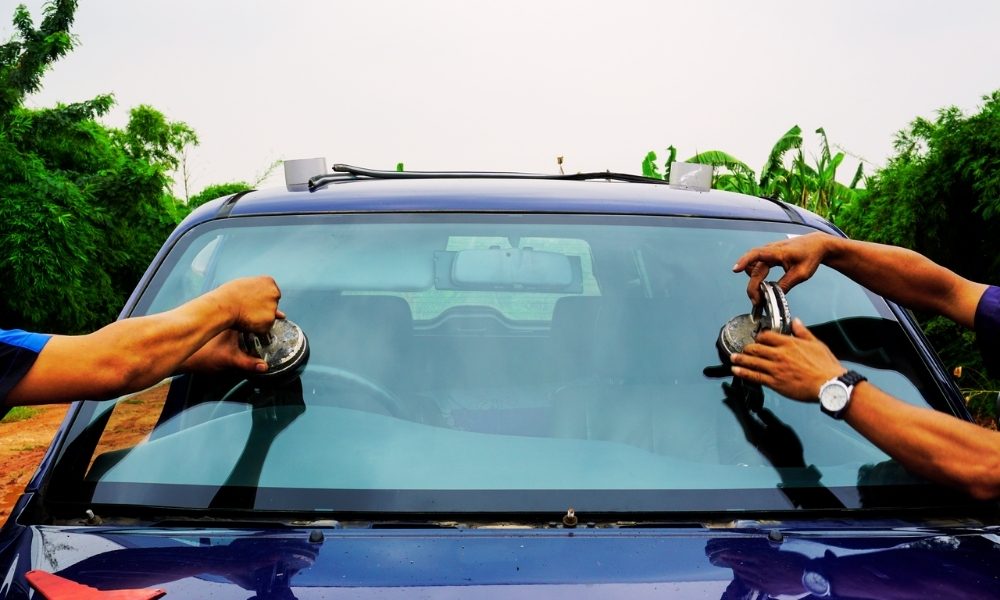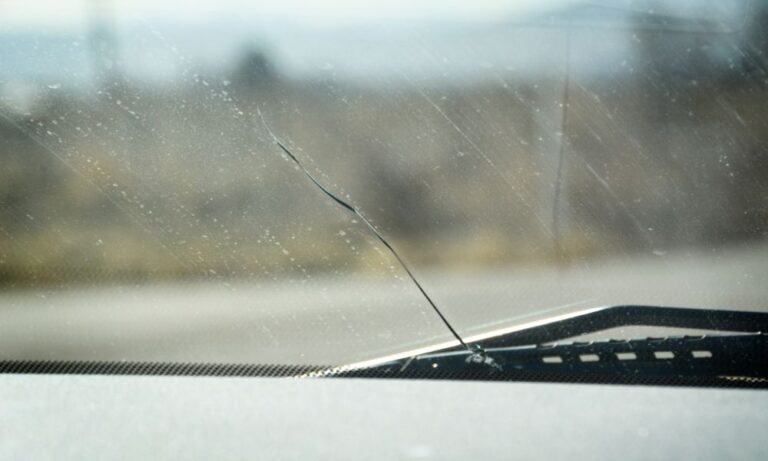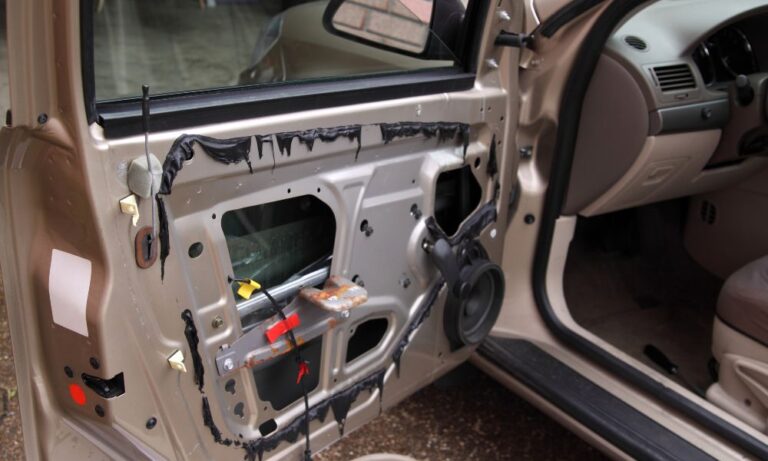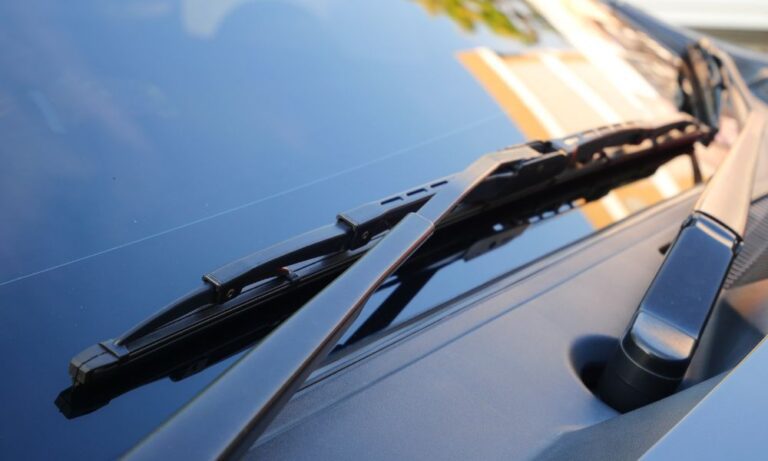Frequently Asked Questions on Windshield cracks Windshields are an important...
What Is Windshield Calibration?

Windshield calibration is a process that ensures that the cameras and sensors of advanced driver assistance systems (ADAS) are properly aligned and calibrated. ADAS systems are becoming increasingly common in modern vehicles, and they are designed to assist drivers in making safer and more informed decisions on the road.
ADAS systems use cameras, sensors, and other technologies to detect obstacles, pedestrians, and other vehicles on the road. They can also detect lane markings, speed limits, and other important information, which can help drivers stay alert and avoid accidents.
However, for these systems to work effectively, they need to be calibrated properly. Calibration involves adjusting the cameras and sensors so that they are aligned correctly and provide accurate readings. This ensures that the ADAS features, such as lane departure warning, forward collision warning, and automatic emergency braking, work as intended.
Calibration is particularly important when a windshield is replaced, as even a small change in the position of the cameras and sensors can affect their accuracy. Additionally, calibration may be necessary if the vehicle undergoes significant repairs or modifications, or if the ADAS sensors or cameras are damaged.
Calibration is typically done using specialized equipment that communicates with the vehicle’s onboard computer and adjusts the cameras and sensors as needed. The process can take anywhere from 30 minutes to a few hours, depending on the type of vehicle and the specific ADAS features.
Why is windshield calibration important?
Windshield calibration is important because it ensures that the advanced driver assistance systems (ADAS) in a vehicle function as intended, providing accurate and reliable assistance to drivers. There are several reasons why windshield calibration is crucial:
1. Safety:
ADAS features such as forward collision warning, automatic emergency braking, and lane departure warning are designed to help prevent accidents and reduce the risk of injury or death. When these features are not properly calibrated, they may not work as intended, leading to a potentially dangerous situation.
2. Accuracy:
ADAS systems rely on cameras and sensors that are mounted on the vehicle’s windshield to collect information about the vehicle’s surroundings. If the cameras and sensors are not aligned correctly, they may provide inaccurate or unreliable data, leading to incorrect warnings or other issues.
3. Compliance:
In some cases, windshield calibration may be required by law or by the manufacturer’s warranty. For example, many vehicle manufacturers require calibration after a windshield replacement to ensure that the ADAS systems continue to function properly.
4. Cost savings:
Properly functioning ADAS features can help prevent accidents and reduce repair costs associated with collision damage. By ensuring that these features are calibrated correctly, drivers can avoid costly repairs and potentially even insurance claims.
In summary, windshield calibration is important for ensuring the safety and reliability of ADAS features in a vehicle. It is crucial to have calibration performed by a qualified technician who has the necessary training and equipment to ensure that the ADAS systems continue to function as intended.
When is windshield calibration necessary?
Windshield calibration is necessary whenever the cameras or sensors of advanced driver assistance systems (ADAS) in a vehicle are disrupted or misaligned. Some specific instances when windshield calibration is necessary to include:
1. Windshield Replacement:
Whenever a windshield is replaced, calibration is necessary to ensure that the ADAS cameras and sensors are correctly aligned. Even a small change in the position of the cameras and sensors can affect their accuracy and result in incorrect readings or alerts.
2. Sensor or Camera Damage:
If the ADAS sensors or cameras are damaged or malfunctioning, calibration is necessary to restore their functionality. This could happen due to an accident or other damage, and calibration is necessary to ensure that the system is functioning correctly.
3. Vehicle Repair or Modification:
Any significant repairs or modifications to a vehicle may also require windshield calibration. If the repairs or modifications impact the position of the cameras or sensors, calibration will be necessary to ensure that they are accurately aligned and functioning properly.
4. Routine Maintenance:
It is also recommended to check the calibration of the ADAS systems periodically, even if there has been no damage or modification. This is especially important for vehicles that are subject to rough driving conditions or extreme weather conditions.
How is windshield calibration done?
Windshield calibration is a complex process that requires specialized equipment and a trained technician. The specific procedure for windshield calibration can vary depending on the vehicle and the type of ADAS system. However, there are some general steps that are typically involved in the process:
1. Preparation:
The technician will begin by ensuring that the vehicle is on a level surface and that the tires are properly inflated. They will also inspect the cameras and sensors to ensure that they are clean and free from damage.
2. Connection:
The technician will connect the calibration equipment to the vehicle’s diagnostic port. This equipment communicates with the vehicle’s onboard computer to identify the specific ADAS features that require calibration.
3. Adjustment:
The calibration equipment will then guide the technician through a series of adjustments to the cameras and sensors to ensure that they are accurately aligned. This may involve adjusting the camera mount, the angle of the camera, or other factors that impact the accuracy of the system.
4. Verification:
Once the adjustments are complete, the technician will perform a verification process to ensure that the ADAS system is functioning as intended. This may involve driving the vehicle at a specific speed or in a particular direction to test the system’s accuracy.
5. Documentation:
Finally, the technician will document the calibration process, including the specific adjustments made and any verification tests performed. This documentation is important for ensuring that the vehicle’s maintenance history is accurate and up-to-date.
Windshield calibration is a complex process that requires specialized equipment and a trained technician as we have here at GlassFixit. The process involves adjusting the cameras and sensors to ensure that they are accurately aligned and verifying the system’s accuracy to ensure that it is functioning as intended. It is crucial to have calibration performed by a qualified technician who has the necessary training and equipment to ensure that the ADAS systems continue to function as intended.
Can windshield calibration be done at home?
Windshield calibration typically requires specialized equipment and a trained technician, so it is not recommended to attempt it at home. ADAS systems are complex and sensitive, and even small errors in the calibration process can have a significant impact on the system’s accuracy and reliability.
In addition, most calibration equipment is expensive and not available for purchase by individuals. Calibration equipment is typically only available to professional technicians who have completed specialized training in the calibration process.
Furthermore, the calibration process requires access to proprietary information and software that is only available to authorized service centers. Attempting to calibrate ADAS systems without the proper tools, training, and access to this information can be dangerous and may also lead to the invalidation of the vehicle’s warranty.
Therefore, it is recommended to have windshield calibration performed by a qualified technician at an authorized service center. This will ensure that the calibration is performed correctly and that the ADAS systems continue to function as intended.
How often does windshield calibration need to be done?
The frequency of windshield calibration depends on several factors, including the make and model of the vehicle, the type of ADAS system, and the driving conditions. In general, it is recommended to have the ADAS system checked for calibration at least once a year, or whenever the vehicle undergoes significant repairs or maintenance.
Some specific factors that can impact the frequency of calibration include:
1. Environmental Conditions:
Driving in extreme weather conditions such as heavy rain, snow, or fog can cause the ADAS cameras and sensors to become misaligned or malfunction. In such cases, it may be necessary to perform calibration more frequently.
2. Driving Conditions:
Driving on rough or uneven terrain can cause the cameras and sensors to become misaligned, which may require calibration. Vehicles that are frequently driven off-road or in rugged conditions may require more frequent calibration.
3. Windshield Replacement:
Whenever a windshield is replaced, calibration is necessary to ensure that the ADAS cameras and sensors are correctly aligned. Even a small change in the position of the cameras and sensors can affect their accuracy and result in incorrect readings or alerts.
4. Vehicle Modifications:
Any significant modifications to a vehicle may also require windshield calibration. If the modifications impact the position of the cameras or sensors, calibration will be necessary to ensure that they are accurately aligned and functioning properly.
In summary, the frequency of windshield calibration depends on several factors, and it is recommended to have the ADAS system checked for calibration at least once a year or whenever there is any disruption to the ADAS cameras or sensors. It is crucial to have calibration performed by a qualified technician who has the necessary training and equipment to ensure that the ADAS systems continue to function as intended.
How much does windshield calibration cost?
The cost of windshield calibration can vary depending on several factors, including the make and model of the vehicle, the type of ADAS system, and the location of the service center. In general, the cost of windshield calibration can range from around $100 to $400 or more.
The cost of calibration may also depend on whether it is part of a larger service or maintenance package. Some service centers may offer calibration as part of a larger package, which may be more cost-effective than paying for calibration as a standalone service.
It is important to note that windshield calibration is a specialized service that requires specialized equipment and a trained technician. Attempting to perform calibration without the necessary equipment and expertise can lead to errors that may compromise the accuracy and reliability of the ADAS system.
Therefore, it is recommended to have windshield calibration performed by a qualified technician at an authorized service center like GlassFixit. This will ensure that the calibration is performed correctly and that the ADAS systems continue to function as intended. While the cost of calibration may seem high, it is an important investment in the safety and reliability of your vehicle.
Contact us now to get a free quote.
Will insurance cover the cost of a windshield calibration?
The coverage for windshield calibration can vary depending on the insurance policy and the circumstances surrounding the need for calibration.
In some cases, insurance policies may cover the cost of windshield calibration if it is necessary due to a covered incident, such as an accident or vandalism that required windshield replacement. In such cases, the insurance company may cover the cost of calibration as part of the claim settlement.
However, it is important to review the terms and conditions of the insurance policy to determine whether calibration is covered and under what circumstances. Additionally, some insurance policies may offer optional coverage for ADAS systems, including calibration. This coverage may be added to the policy for an additional premium.
It is recommended to consult with your insurance provider to determine whether your policy covers windshield calibration and under what circumstances. Some service centers may also work with insurance companies and can assist in processing any claims related to calibration.
In summary, the coverage for windshield calibration depends on the insurance policy and the circumstances surrounding the need for calibration. It is important to review the terms and conditions of the policy and consult with the insurance provider to determine whether calibration is covered and under what circumstances.
If you have any questions on windshield cracks, you may read the Frequently Asked Questions on Windshield cracks article.
Read more Articles
All You Need To Know About Car Window Regulators
All You Need To Know About Car Window Regulators Car...
Heated windshield wipers: A Complete Guide
Heated windshield wipers: A Complete Guide If you live in...



